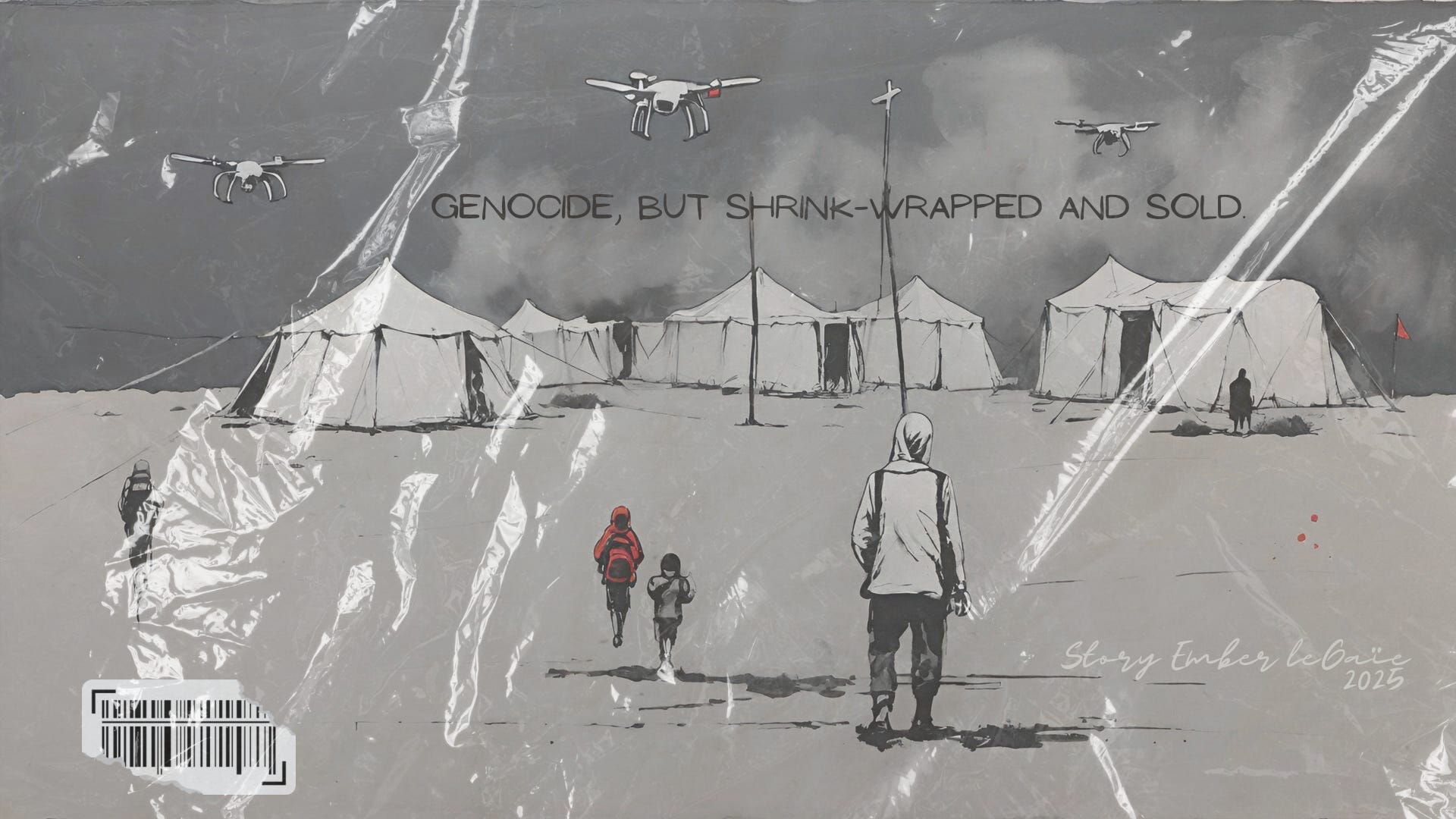Death from the Sky
Israel’s Suicide Drones and the Industrialization of Palestinian Erasure
There is a new way to die in Gaza.
It doesn’t involve tanks or jet fighters. It doesn’t require a battlefield or even a warning.
It begins with a soft mechanical hum in the sky.
And it ends with the bodies of children burned and shredded in the dirt beside their tents.
This week, in central Gaza, four children were murdered by a loitering Israeli drone. They had been playing beside tents—temporary shelters for displaced families. The drone hovered. Then it detonated.
This wasn’t surveillance. It was slaughter.
A New Weapon for an Old War
The Israeli regime has begun deploying suicide drones—what it calls “loitering munitions”—across the Gaza Strip. These are not standard UAVs. These are AI-guided, mid-air explosive devices designed to hover, identify gatherings, and then self-destruct over them.
These drones—like the Rotem L and Harop—are tailor-made for urban mass murder:
Quiet, compact, and launched by infantry in under a minute.
Programmed to target gatherings, including civilians.
Equipped with warheads capable of decimating soft targets like tents and bodies.
Israel tested them in southern occupied Palestine in 2018. Now they are live-tested on Gaza’s displaced.
From Tech Bro to War Criminal
In Tel Aviv, this is called “precision.”
In Gaza, it’s genocide in algorithmic form.
These drones are designed to create plausible deniability. With no pilot to interrogate, no cockpit footage, and no real-time oversight, kill decisions are automated, dehumanized, and untraceable.
This isn’t a glitch. It’s a feature.
And in a world already gaslit into believing “surgical strike” means “accidental child dismemberment,” Israel’s suicide drones offer a tech-savvy upgrade to its propaganda machine.
Saftar by Design
What does it mean to target children at play?
To turn displacement tents into bullseyes?
It means this: even moments of joy are punishable by death.
This is the logic of genocide—where being Palestinian is the crime, and existing in public is the evidence.
There is a word for this grief: Saftar—the devastating loss of a life and its story, cut short before the tale could unfold. Gaza is carved with saftars now. Each drone strike is another sentence never written.
Exportable War Crimes
These drones are cheap. Portable. Manufactured in-house.
They are not just weapons—they are exportable templates for empire.
Israel is already marketing them as “precision solutions.” But the evidence is clear:
Burned bodies.
Torn tents.
Murdered children.
No “surgical” tool targets playgrounds. No ethical weapon finds a cluster of fleeing refugees and chooses to dive.
These drones don’t miss. They are told where to go.
Genocide Doesn’t Always March—Sometimes, It Hovers
Suicide drones in Gaza are not the future of war.
They are the present of genocide—cold, cost-efficient, and cleansed of human hesitation.
The regime calls them “smart.”
We call them what they are: flying war crimes.
And as Gaza’s skies fill with machines, the world must ask:
What kind of future are we building—
if we allow machines to decide when a Palestinian child dies?
Saftar in the Sky
They said the drones were quiet— But thry heard them. In the pause between laughter and smoke. In the silence where four children once played. A hum, A flash, A name erased mid-giggle. There is no future here. Only stories stolen by circuits. Only justice drowned in code. And still— Gaza endures. Even as the sky forgets how to hold mercy.





Israel has all the tools of death, the best that technology and the US can provide, and uses them with enthusiasm.